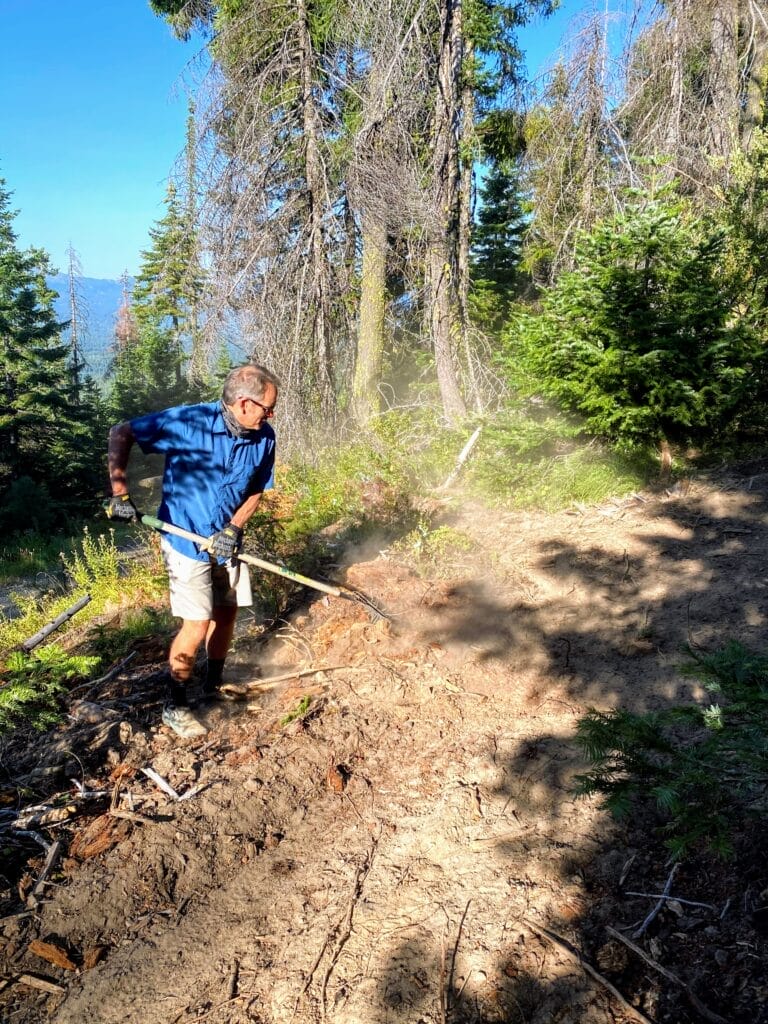History and Planning
In 2013, Washington State protected 50,241 acres in the Teanaway River Basin, located a stone’s throw away from Cle Elum, Roslyn, and Ronald. Those lands became the Teanaway Community Forest, an increasingly popular destination for year-round recreation. In 2014, The Nature Conservancy took on management of the ridgeline between the towns and the new forest, and community members saw an opportunity to create something that would benefit locals and visitors alike: an official trail system to new public lands. At the time, the Teanaway Community Forest managers were undertaking a recreation planning process, and the people who would end up shaping Towns to Teanaway thought: “What if we could have a bigger conversation about trails in the Upper County?”
A project leadership group came together to gauge local interest in the idea, and raised funds to hire a professional landscape architect, J.A. Brennan Associates. Together with staff from The Nature Conservancy, the Mountains to Sound Greenway Trust, and Kittitas Conservation Trust, the group raised $70,000 in grants, donations, and other grassroots sources. In 2017, they kicked off an 18-month design and public input process.
The Planning Process:
Between May of 2017 and August of 2018, the project leadership group organized four town hall meetings to gather public input, review the architects’ designs, and provide opportunities to edit the proposed trail systems.
J.A. Brennan Associates put forward two proposals:
- Fewer trail miles, combining all recreational users on the same trails
- More trail miles, dividing different user groups across the landscape
A 30-day public comment session gathered community comments, which were overwhelmingly in favor of more trail miles so recreators could participate in their activity of choice, minimizing the chances of conflict between hikers, bikers, horseback riders, and others.
Design Goals
Before Towns to Teanaway, there were no official trails linking local communities with the nearby Teanaway Community Forest. The Cle Elum Ridge was crisscrossed by dozens of user-made trails – paths of least resistance worn into the ground by people and wildlife – but those trails weren’t planned to accommodate different user types, experiences, or skill levels. User-trails trespassed across private property, intersected wildlife corridors, and caused erosion into streams and waterways.
With these issues in mind, the project leadership group held information-gathering meetings in July, March and April of 2017. Guided by community feedback, they determined that a new trail system should:
- Build in stacked loops that meet a variety of user abilities, with accessible trails and trailheads
- Prioritize relatively easy routes from each community to the Cle Elum Ridge
- Preserve wildlife corridors and enhance habitat
- Develop partnerships with private landowners
- Ensure non-motorized and snowmobile trails adhere to standard policies of public and private land owners
- Ensure new trails are sustainable and low maintenance
- Decommission or reroute trails that do not meet these criteria or standards
- Engage volunteers to construct and maintain trails
- Minimize impacts to the community, while driving the local outdoor recreation economy
Implementation
Towns to Teanaway kicked off with a bang in Fall of 2018, when 300+ REI volunteers helped complete the Ewok trail! Since then, through partnerships with the Washington Trails Association, Evergreen Mountain Bike Alliance, The Nature Conservancy, Mountains to Sound Greenway Trust, Rotary clubs, local Community Enhancement funds and private donors, Towns to Teanaway has built 11 miles of trail, including:
- Ewok: A main multi-use trail to the City of Roslyn
- Mixtape: A main multi-use trail to the City of Ronald
- Brass Monkey: A mountain bike only downtrack into Ronald
- Paul’s Trail: A loop trail at the top of the ridge, linking all the climbing trails while providing amazing views of the Teanaway Community Forest
The project leadership group strives to complete a new trail every year, relying on grants, donations, and volunteers to execute the project.





